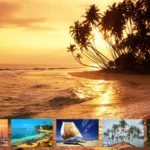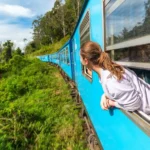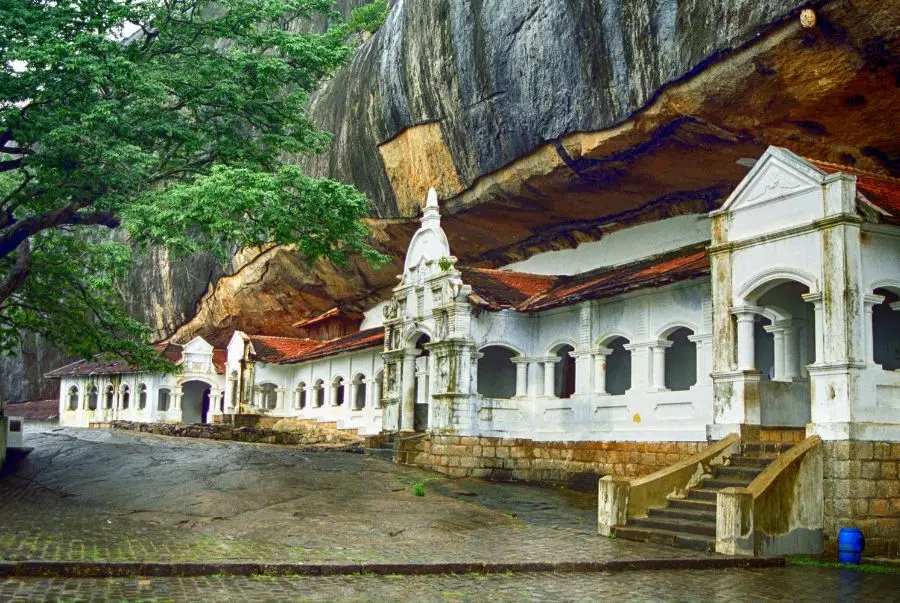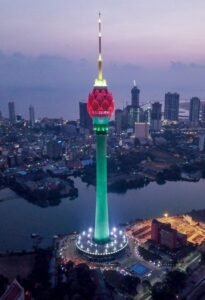Sri Lanka is a food lover’s paradise. Known for its bold flavors, rich spices, and diverse culinary influences, Sri Lankan cuisine offers a unique gastronomic experience that’s sure to delight the taste buds. From rice and curry to street food snacks, Sri Lanka’s culinary traditions reflect its rich history and vibrant culture.
Whether you’re a first-time visitor or a seasoned traveler, this guide will help you navigate the must-try dishes in Sri Lanka and where to find them. Get ready for a food adventure that’s as exciting as the island itself!
1. Sri Lankan Rice and Curry – A Classic Dish
No visit to Sri Lanka is complete without trying the classic rice and curry. This dish typically consists of steamed rice served with a variety of curries made with vegetables, meat, or seafood. The curries are cooked with aromatic spices such as cumin, coriander, and turmeric, creating a rich and flavorful meal.
- Must-Try Variants:
- Chicken Curry: A spicy and fragrant curry made with marinated chicken and coconut milk.
- Dhal Curry: A comforting lentil curry, often served as a vegetarian option.
- Fish Curry: Fresh fish cooked in a tangy, spicy curry sauce.
Where to Find It: Almost every Sri Lankan restaurant offers rice and curry, but some of the best places to enjoy it are local eateries (called “hotels”), where you’ll find authentic and freshly made dishes. Look for restaurants in Colombo, Kandy, and Galle for an unforgettable meal.
2. Kottu Roti – Sri Lanka’s Street Food Favorite
Kottu roti is Sri Lanka’s iconic street food, made with chopped flatbread, vegetables, eggs, and meat (often chicken or beef). It’s stir-fried on a hot plate with a variety of spices and served with a spicy gravy. This dish is a favorite among locals and is perfect for a late-night snack.
Where to Find It: The best places to try Kottu Roti are in the streets of Colombo and Kandy, where food stalls and small eateries serve this dish fresh and hot. Kottu stands in Fort Colombo are especially popular.
3. Hoppers (Appa) – A Delicious Breakfast Dish
Hoppers (or appa) are bowl-shaped pancakes made from fermented rice flour, typically eaten for breakfast. They can be served with a variety of toppings, including egg hoppers, where an egg is cracked into the center of the hopper, or sweet hoppers with jaggery and coconut.
Where to Find It: For a traditional hopper experience, head to Galle Road in Colombo, or visit the food stalls in Kandy and Nuwara Eliya. The Kandy House also offers delicious hoppers in a more upscale setting.
4. Sri Lankan Seafood – Fresh from the Ocean
Given its location as an island, Sri Lanka boasts some of the freshest and most delicious seafood in the world. From crab curry to grilled prawns, the seafood here is seasoned with aromatic spices and served with rice or bread.
Must-Try Dishes:
- Crab Curry: Sri Lanka’s famous crab curry cooked in a rich, spicy coconut milk-based sauce.
- Jaffna Crab Curry: A popular regional dish from Jaffna, featuring crabs cooked with local spices and coconut milk.
Where to Find It: For the best seafood, head to coastal towns like Negombo, Unawatuna, and Mirissa. Popular seafood restaurants such as The Lagoon in Colombo and Seafood Restaurant in Galle serve up the freshest catches.
5. String Hoppers (Idiyappam) – A Light and Savory Meal
String hoppers (or idiyappam) are steamed rice noodles, often served for breakfast or dinner with a variety of side dishes, including dhal curry, coconut sambol, or egg curry. This dish is light yet filling, and it’s a great way to start your day.
Where to Find It: You can find string hoppers in most Sri Lankan homes and local eateries across the island. Try it at local restaurants in Colombo and Kandy, especially during breakfast hours.
6. Curd and Treacle – A Sweet End to Your Meal
For dessert, curd and treacle is a classic Sri Lankan treat. Made with buffalo milk, the curd is creamy and tangy, and when paired with kithul treacle (a sweet syrup made from the sap of the kithul tree), it creates the perfect balance of sweetness and tang.
Where to Find It: You can enjoy this simple yet delicious dessert at local restaurants and small food stalls across Sri Lanka. Try it in Kandy, where it’s often served fresh from local dairies.
7. Wattalappam – Sri Lanka’s Traditional Dessert
Wattalappam is a popular Sri Lankan dessert made from coconut milk, jaggery, and spices like cinnamon and cardamom. It is a rich, custard-like pudding, often served during festivals or special occasions.
Where to Find It: Wattalappam can be found at Sri Lankan restaurants and served at traditional Sri Lankan feasts. Try it at local eateries or high-end hotels like Cinnamon Lakeside in Colombo.
8. Samosas – A Delicious Snack
Sri Lankan samosas are a must-try street food snack. These deep-fried pastry pockets are filled with a mix of potatoes, onions, and spices, making them crispy and flavorful. They are perfect for a quick bite or an afternoon snack.
Where to Find It: Samosas are widely available in the streets of Colombo, Galle, and Kandy, and are also sold in small snack shops and food carts.
9. Lamprais – A Dutch-Inspired Sri Lankan Dish
Lamprais is a unique Sri Lankan dish influenced by Dutch colonial cuisine. It consists of rice cooked in stock and packed with meat, usually chicken or beef, along with vegetables, boiled eggs, and a mix of spices. The ingredients are wrapped in a banana leaf and then baked.
Where to Find It: Lamprais is traditionally served at Sri Lankan weddings and special events. To experience the best, try it at local restaurants in Colombo or specialized Sri Lankan food establishments.
10. The King Coconut – A Refreshing Drink
For a natural, refreshing drink, try king coconut water, a sweet and hydrating beverage straight from the fruit. It’s a perfect way to cool off after a day of exploring Sri Lanka’s sights.
Where to Find It: King coconuts are sold by roadside vendors across the island, especially in tourist hotspots like Colombo, Kandy, and Galle.
Book Your Sri Lankan Culinary Adventure with Tranz Ceylon Tours & Travels
Sri Lanka offers a food experience like no other, from street food delights to fine dining. To make the most of your culinary journey, Tranz Ceylon Tours & Travels provides customized food tours that let you explore Sri Lanka’s authentic cuisine. With expert local guides, you’ll have the opportunity to taste the best dishes Sri Lanka has to offer, learn about the island’s food culture, and even try your hand at cooking Sri Lankan meals.
Why Choose Tranz Ceylon Tours & Travels?
- Tailored Culinary Tours: Discover Sri Lanka’s best food destinations with a tour designed just for you.
- Expert Local Guides: Enjoy insightful and personal culinary experiences with local guides.
- Seamless Travel Experience: Trance Ceylon handles all the details, including transportation and bookings, so you can focus on enjoying your trip.
Book your Sri Lankan culinary adventure with Tranz Ceylon Tours & Travels and savor the flavors of this beautiful island!











